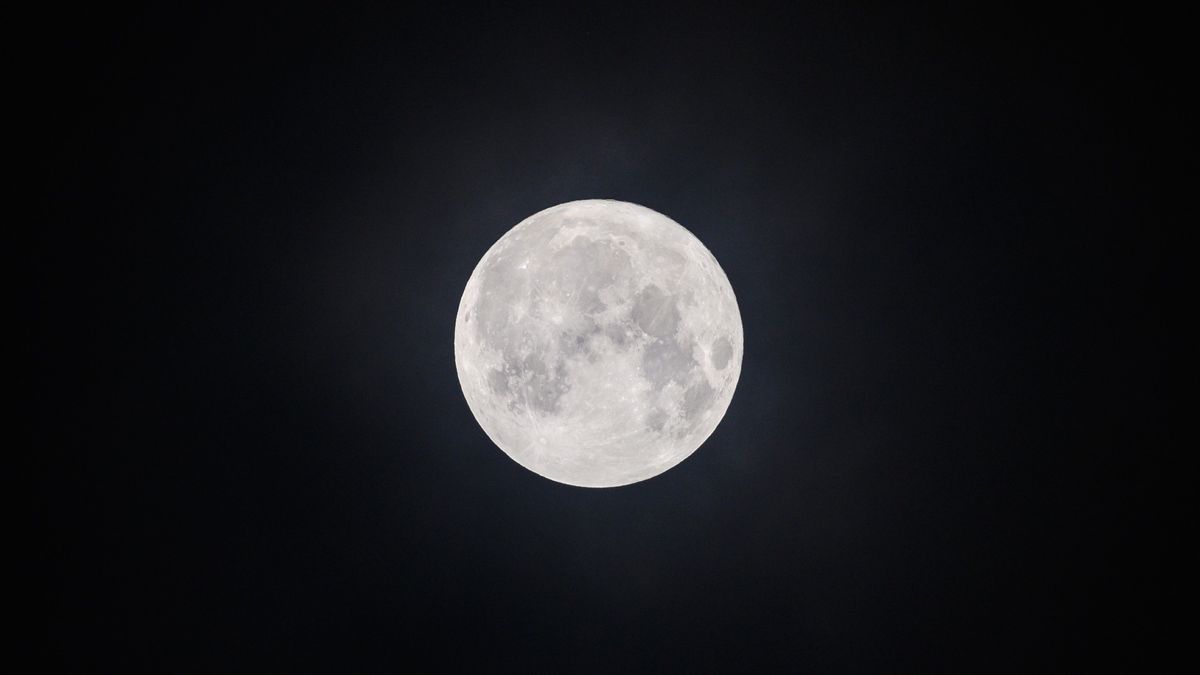The upcoming full moon on Wednesday, Aug. 30, will be a remarkable sight, as it will be one of the brightest and largest moons of 2023.
Contrary to popular belief, the term “Blue Moon” has nothing to do with color. Instead, it refers to the second full moon that occurs within a calendar month. Therefore, Wednesday’s full moon is known as a Blue Moon because it is the second full moon of August. Just like the Sturgeon Moon on Aug. 1, the first full moon of the month, this Blue Moon will also be a supermoon. As a supermoon, it will appear slightly larger in the sky due to its closer proximity to Earth.
Related: August’s rare Super Blue Moon, the biggest full moon of 2023, rises Aug. 30
When will the Super Blue Moon of 2023 occur?
According to In the Sky, the Super Blue Moon will rise shortly after sunset at 7:10 p.m. EDT (2310 GMT) on Wednesday, emerging from the eastern horizon. However, this won’t be when it is at its brightest and largest. The exact moment of a full moon is when it is 180 degrees opposite the sun in the sky over Earth. For this year’s Blue Moon, that moment will occur at 9:36 p.m. EDT on Wednesday, Aug. 30 (0336 on Aug. 31), according to NASA. During this time, it will be located in the constellation of Aquarius. The Blue Moon will then set on Thursday, just before sunrise at around 6:46 a.m. EDT (1046 GMT).
What is a Super Blue Moon?
A Super Blue Moon is typically the second full moon that occurs within a single calendar month (although it technically refers to the third full moon in a season that has four full moons). On average, full moons occur around 12.4 times a year, causing certain months to accommodate two full moons and be labeled as Blue Moons. The Blue Moon on Aug. 30, 2023, is also a supermoon because it coincides with the moon’s closest approach to Earth. Due to the moon’s elliptical orbit, there are times when it is farther away (apogee) and times when it is closer (perigee) to our planet. The distance between Earth and the moon during perigee and apogee can vary by around 14%. Although the supermoon may appear slightly larger and brighter, the difference is often unnoticeable to casual observers.
When is the next Super Blue Moon?
Super Blue Moons are relatively rare occurrences. While they can happen twice within the same month, they can also have gaps as long as 20 years between them, as stated by NASA. On average, there is about a 10-year time span between Super Blue Moons. The next one after Aug. 30, 2023, will occur in January 2037, followed by another one in March 2037, according to NASA.
When is the next supermoon?
Although it won’t be a Super Blue Moon, another supermoon is scheduled to occur in 2023. September’s Full Corn Moon on Sept. 29 will be the fourth consecutive supermoon and the final one of the year. According to In the Sky, the next supermoon after that will take place on Sept. 18, 2024, followed by another one a month later on Oct. 17, 2024.
If you’re interested in observing the Super Blue Moon, we recommend starting with our guides to the best telescopes and best binoculars.
If you’re looking to capture photos of the Super Blue Moon or the night sky in general, be sure to check out our guide on how to photograph the moon, as well as our recommendations for the best cameras for astrophotography and best lenses for astrophotography.
Editor’s Note: If you capture an image of the Super Blue Moon and would like to share it with Space.com’s readers, please send your photo(s), comments, name, and location to [email protected].
Denial of responsibility! VigourTimes is an automatic aggregator of Global media. In each content, the hyperlink to the primary source is specified. All trademarks belong to their rightful owners, and all materials to their authors. For any complaint, please reach us at – [email protected]. We will take necessary action within 24 hours.


